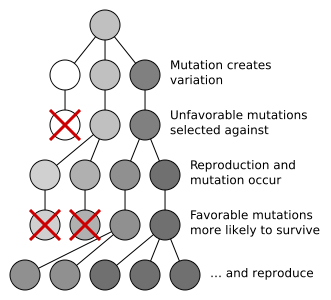PDF chapter test TRY NOW
As we have learnt sexual reproduction is a process which involves meiotic divisions that help in recombination of genes during gametic fusion. The recombination of genes causes differences known as variations in the phenotype of the offsprings.
Variations are differences between cells or individuals within a species and the offspring of the same parent caused either due to genetic differences or environmental factors.
As it plays a special role in evolution, evolution would not be possible without variation.
Mutation and variations:
These are the two most prominent events of evolution.
Mutations are the changes in the DNA sequence that arise due to errors occurring in DNA during replication or exposure to UV rays or chemicals.

Occurrence of variation due to mutation
These mutations cause variations and bring about changes in an individual.
It is a process through which genetic variations are produced, resulting in changes in the organism. Mutations can be due to changes in the base sequence of a gene or chromosome number, or structure.
Types of variations:
Based on the cells which they occur variations are of two types:
- Somatic variations
- Germinal variations
1. Somatic variations:
These are the variations that affect the somatic cells of the organisms and are hence not heritable. They occur due to environmental factors.
2. Germinal variations:
These are the variations that are found in the germ cells of an organism. Hence, they are inherited. There is a possibility of these variations to be present in the ancestors or to occur all of a sudden. Based on this, these germinal variations are classified into two types as follows:
- Continuous variation
- Discontinuous variation
a. Continuous variations:
These are small variations that occur among the individuals of a population. They are also known as fluctuating variations, and they occur by gradual accumulation in a population.
Example:
Skin colour, height and weight of an individual, colour of eye etc.

Continuous variations of eye colour
b. Discontinuous variations:
These are sudden changes that occur in an organism due to mutations and do not have any intermediate forms. As they are significant variations, they do not play any role in evolution.
These variations form the basis for the mutation theory proposed by De Vries.
These variations form the basis for the mutation theory proposed by De Vries.
Example:
Short legged Ancon sheep, six or more digits (fingers) in human, etc.
Reference:
https://commons.wikimedia.org/wiki/File:Mutation_and_selection_diagram.svg
https://upload.wikimedia.org/wikipedia/commons/thumb/b/bf/Genetic_variation.png/1024px-Genetic_variation.png
